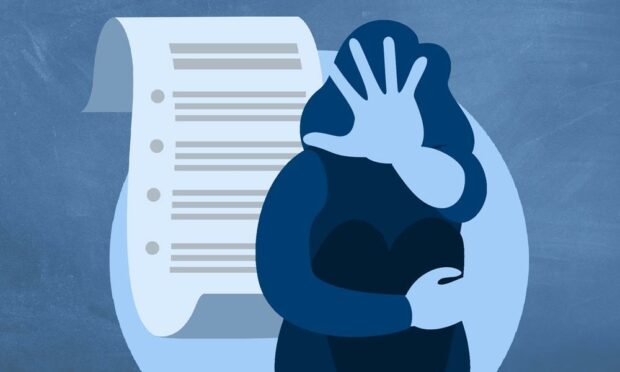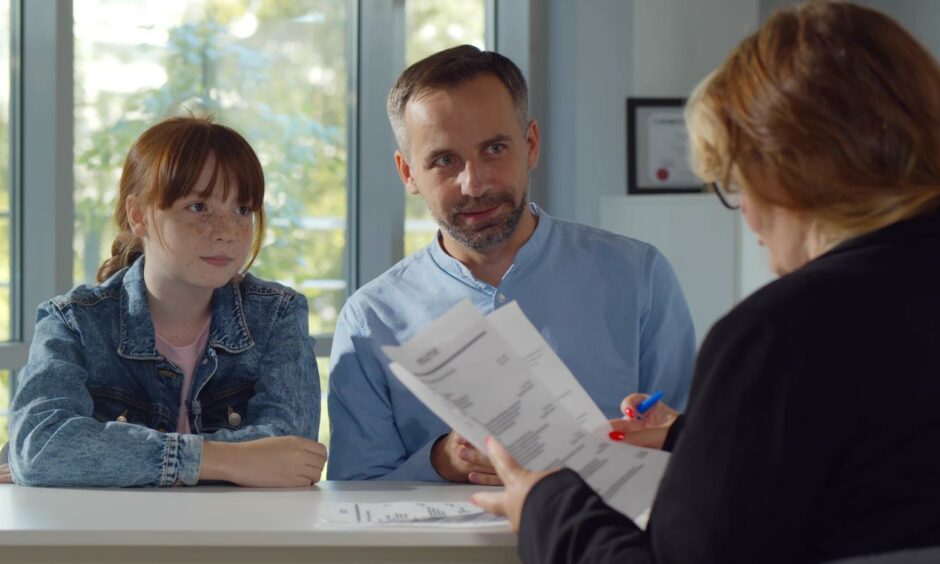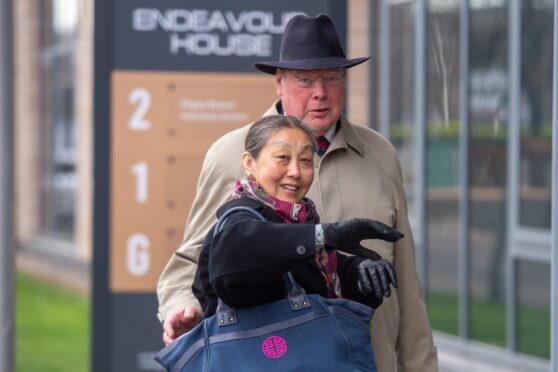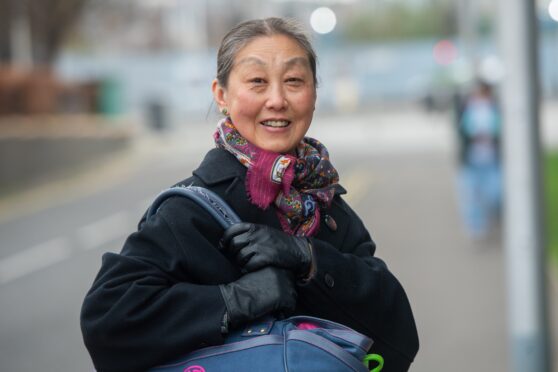When a child is bullied at school, staff will often refer to their anti-bullying policies before deciding the best way to resolve the issues.
Every case of bullying is different and requires a unique response such as mediation with the victim and perpetrator.
Schools, local authorities and the Scottish Government all have anti-bullying policies in place to guide how they act to reports.
Schools are legally required to record any reports of bullying from pupils and eyewitnesses and the action taken.
This helps to identify patterns, such as repeat offenders or characteristics such as racism or homophobia, becoming prevalent in a school.
We have selected an anti-bullying policy from a school in each of our four local authority areas.
Below we look at similarities in their approach to tackling bullying, along with the policies of local authorities and the government.
Kindness and positive relationships
The schools we assessed – Braeview Academy, Dundee, Forfar Academy, Angus, Dunfermline High School, Fife and Pitlochry High School, Perthshire – all develop their own policies in line with their local authority’s anti-bullying approaches.
Each school also places an emphasis on kindness and positive relationships in the hope that pupils will be able to reflect on their own actions and understand the impact it may have on others.
Braeview Academy’s policy states that ‘kindness days’ are a part of school life and pupil ambassadors are appointed to spread the school message.
The Dundee school also states that when a child is bullied they can expect “support which will help to overcome situations of bullying behaviour or to challenge bullying behaviour”.
Restorative conversations
Across the four areas, restorative measures can include mediated conversations between all involved, parental involvement and peer support.
Harsher punishments, such as suspension and exclusion, are only used as a last resort.
This is because government studies have suggested that punitive measures may not be the most effective way of changing a behaviour and it can actually have a damaging impact on the suspended child.
‘Bullying behaviour’
Not every child who bullies is doing it out of malice and the anti-bullying policies state schools should use the term “bullying behaviour” rather than labelling a child as a bully.
They may already have a negative view of themselves and labelling them a bully could only cause more problems.
Approaches like this allow the children who are displaying bullying behaviours to learn from their behaviour.
Dunfermline High School’s anti-bullying policy states that where pupils do display bullying behaviours “we need to engage with them educationally, supportively and restoratively rather than punitively.
“Such an approach may, understandably, be challenged by those who believe that pupils who bully should experience only negative consequences as a result of their behaviour.
“It is our firm belief that such an approach is ultimately counterproductive.”
However where appropriate, the Fife school refers pupils to the Apex Unit as an ‘alternative to exclusion’ where they will experience an intensive, restorative programme to better understand the impact their behaviour has.
When to involve outside organisations
Similar approaches are adopted by Pitlochry High School, which follows Perth and Kinross Council’s anti-bullying strategy.
Within this, teachers are given a guide on how to record an incident of bullying.
It also advises school staff on the appropriate time to consider interventions from other agencies, such as counsellors, charities or police.
Perth and Kinross Council said: “(Our) schools should be safe, secure and happy places for our children and young people to attend.
“With this in mind, we take allegations and incidents of bullying within schools extremely seriously and have an anti-bullying strategy in place, underpinned by each school’s own anti-bullying policy which clearly sets out how they will deal with reported incidents of bullying and bullying behaviour.
“Our overarching strategy considers the widening definition of bullying behaviour that now includes cyber-bullying and the many forms of prejudice-based bullying.
“Schools actively work to reduce bullying and address concerns through a range of approaches based on individual circumstances and we would always encourage children, young people and their parents/carers to report any incidents of bullying behaviour so appropriate action can be taken.”
Anyone who witnesses bullying should report the incidents to a relevant authority, such as teachers, police or parents.
Scotland’s anti-bullying service RespectMe offers guidance for young people who are experiencing bullying and their parents and teachers.
If you feel like the bullying you witnessed at school or online was a hate crime, you can also report it to Police Scotland via 101.
Childline support young people with any worries they may experience, including mental health and bullying.
They can be contacted confidentially on 0800 11 11 or use their free 1-2-1 counselling service.
Read more from our bullying series
-
- ‘Mummy I just want to die’: Devastating words of Fife girl, 7, after years of bullying
- Bullying in schools: Our survey reveals 9 in 10 parents do not think schools can effectively tackle it
- Bullying advice: How to help children who are being bullied
- Types of bullying: What is classed as physical, sexual and prejudicial bullying?
- Devastating effects of bullying on children in the short and long term
- OPINION: I attempted suicide after years of bullying – schools need to take it seriously
- Autistic Angus teen terrified to go to school as pupil threatens to ‘kill him
- How to report bullying to schools and the police
- Mum says alleged assault of her 5-year-old son shows bullying happens at any age
- Race, religion and sexual orientation among main reasons for school bullying in Tayside and Fife
- Relentless bullying makes Autistic Angus teen pull her own hair out and say she wants to die
- School exclusions must be ‘last resort’ to dealing with bullying, Education Secretary says













